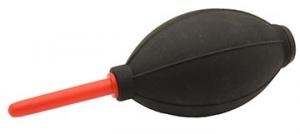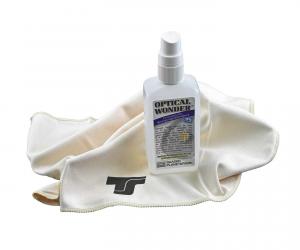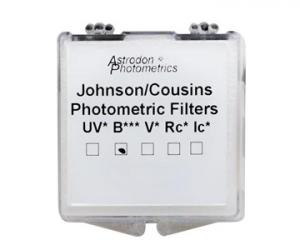- Telescopes
- Overview:
Telescopes - Achromatic Refractor
- Apochromatic Refractor
- Overview:
Apochromatic Refractor - ED Refractor - less color aberration than an achromatic
- SD APO - color free 2-element APO objective
- EDT APO - 3 element ED objective
- High End APO with 3-element APO objective - no color aberation
- Flatfield APO with flat field for Astrophotography
- All Apos and EDs from all manufacturers - large overview
- TS APO and ED from Japan with high quality optics
- Overview:
- Newtonian Telescopes
- Dobsonian Telescopes
- RC Ritchey Chretien Telescopes
- Casssegrain Telescopes
- Reflektor Telescopce with Lens Correcture
- Maksutov Cassegrain Telescopes
- GoTo Telescopes
- Solar Telescopes H-Alpha
- Overview:
- Mounts Tripods Rings Rails Power Supply ...
- Overview:
Mounts Tripods Rings Rails Power Supply ... - Mounts Equatorial with GoTo
- Mounts Equatorial without GoTo
- Mounts Azimutal with GoTo
- Mounts Azimutal without GoTo
- Mounts GoTo - Harmonic Drive
- Travel mounts for astro imaging
- Tripods Piers Polar Wedges
- Mount Control & Electronics
- Dovetail Clamps, Plates and Mount Adapters
- Tube Rings
- Power Supply
- Counterweights Balance Weights
- Mount Accessories - Other
- Overview:
- Telescope Accessories
- Overview:
Telescope Accessories - Eyepieces
- Barlows & Reducer Lenses
- Diagonal Mirrors and Prisms
- Binocular Viewers
- Finder Scopes
- Telescope Collimation and Test
- Cleaning Tools
- Transport and Storage
- Dust protection for Telescopes & Accessories
- Stray Light Protection
- Dewcaps and Heater
- Focusers, Adapters, Motorfocus
- Telescope DIY & Improvement
- Other telescope accessories
- Replacement Parts
- Overview:
- Filters
- Overview:
Filters - Color Filters and Color Filtersets
- Nebular Filters for Visual Observing
- Neutral-Density and Polfilter
- Photo Narrowband Nebular Filters
- Photo Broadband Filters
- Photo Planetary Filters
- Photo R-G-B and IR Cut Filters
- Photo - Filtersets
- Photometric Filters
- Clip Filter for DSLR Cameras
- Filter Wheels and Filterslider
- Solar Filters for white light
- Solarfilter for H-Alpha and Calcium
- Overview:
- Adaptors
- Overview:
Adaptors - Adapter 1,25" and 24,5mm
- Adapter 2"
- Adapter T2 - M42x0.75
- Adapter M48x0,75
- Adapter M54
- Adapter SC
- Adapter M63
- Adapter M68
- Adapter to other Threads
- Adapter Extensions
- Adapter camera bayonet
- Adapter Objective Filterthread
- Adapter Quick Changing , Rotation
- Adapter Eyepiece Projection
- Adapters Tilting
- Overview:
- Astrophotography and Photography
- Overview:
Astrophotography and Photography - Cooled Cameras
- Cameras without Cooling
- Deep-Sky Cameras uncooled
- Set-Offers Camera, Filter, Wheels
- Acessories for Cameras
- Travel mounts for astro imaging
- Imaging Correctors for Telescopes
- Autoguiding Cameras & Sets
- Everything for Guiding
- Focusing aids - Bahtinov mascs
- Flat Field foils and boxes
- Lenses for Cameras
- Piggyback Camera Holder
- Camera Bags, Photocases & more
- Digital Camera and Smartphone Adapter
- Other photo accessories
- Overview:
- Binoculars, Spotting Scopes, Microscopes, Range Finders
- Overview:
Binoculars, Spotting Scopes, Microscopes, Range Finders - Spotting Scopes and Acessories
- Roof Prism Binoculars
- Binoculars with Porro prisms
- Binoculars from 100mm Aperture
- Binoculars with 1,25 inch eyepieces
- TSMX APO Binoculars
- Binoculars for Astronomy
- Binoculars Hiking Bird watching
- Monoculars - Opera Binoculars
- Accessories for Binoculars
- Range Finders
- Microscopy
- Bags for Phototripods & Binoculars
- Overview:
- Phototripods and Binomounts
- Books, Software
- Overview:
Books, Software - Books for Astronomy Beginners
- Star Charts and Planispheres
- Books about our Solar System
- Observing Tips for Amateurs
- Popular Astronomy Literature
- Teaching material
- Astrophotography books
- Telescopes, Observatories, Construction
- Calendars Yearbooks
- Software, Star Charts
- Books for Microscopers
- Books Nature and Animals
- Nature Photography TimeLapse
- Overview:
- Night Vision, Magnifiers, Weather, Domes & more
- Beginner Astronomy and Gift Ideas
- Second Hand & Special Offers
- New products
Manufacturer: Astrodon Astrophoto Filter
Product number: B***_50R
EUR893.56new
EUR 893,56
incl. 19 % VAT (DE)
The VAT indicated refers to that applicable in Germany. After logging in, the VAT amount is adjusted to the applicable VAT of the stored delivery country. Therefore, the final price may vary accordingly.
excl. 6.95 € shipping costs (DE)
more details to the shipping costs ...Please log in to calculate shipping costs to your country.
There are no reviews for this product
- Details..
- Technical data..
- In the box..
- Manufacturer infos..
- Safety informations..
Astrodon Photometrics Filter B*** - blue, 50 mm round
UBVRI filters have been the standard for photometric measurements for decades. They have evolved over time as technology changed. H. Johnson in the 1950s and A.W.J. Cousins in the 1970s designed these filters for photomultiplier tubes (PMT). M. Bessell in the early 1990s selected colored glasses to match the Johnson/Cousins designs for CCD cameras of the time. However, Bessell´s designs were based upon colored glasses available at the time. Some of those glasses (e.g. Schott KG-4 used in conjunction with Schott RG-9 to make the "Is" photometric filter) have been discontinued. Lastly, PMTs of the time limited light past 900 nm, whereas modern CCDs are sensitive to nearly 1100 nm. Thus, to truly match the Johnson/Cousins Ic filter, a dielectric coating must be used to block light past 900 nm for CCD systems. This cannot be achieved with colored glasses. Astrodon uses Ic and Rc (c = Cousins) to designate that they match the Johnson/Cousins designs with their coated filters, as closely as possible.Internal absorption of light in the colored glasses used to make traditional filters limits the final transmission. For example, the U filter typically does not transmit more than 60-70% of the light. The Rs filter, 70-80%. New Astrodon Photometrics coated filters exceed 95%.
Schott BG-39 glass (with Schott GG-495 glass) in the traditional photometric V filter may degrade and become cloudy due to surface crystallization from exposure to humidity. It needs to be covered by a clear glass to protect any exposed surface, making the filter thicker.
With the advent of high performance, hard and durable dielectric coatings, both high transmission in excess of 95% and durability can be achieved. Filters last longer and transmit more light.
The three stars in B*** mean that this filter is improved, featuring extending blocking >1100 nm and eliminating small light leaks of Astrodon´s initial filters that affected measurements of reddest stars
Astrodon Photometrics UBVRcIc filters adhere to the Johnson/Cousins bandpass designs as closely as possible.
These filters are parfocal with all Astrodon LRGB and narrowband filters. You can add an Astrodon Clear or Ha filter and they will be parfocal within the limits of your optical system. Astrodon Photometrics set a new standard for photometric filters used for variable star and other research. They are 100%-coated on 1/4-wave fused silica substrates and do not use colored glass laminates. As a result, these filters have the best durability available for photometric filters.
| Spectral profile: | Johnsons/Cousins B*** |
| Technology: | Interference filter |
| Peak transmission: | >90% |
| Substrate: | Fused silica, edges blackened |
| Accuracy: | 1/4-wave propagated wavefront prior to coating |
| Parallelism: | <0.5 arcminute |
| Substrate thickness: | 3.000 +/-0.025 mm |
| Parfocal: | with all Astrodon filters |
| Manufacturer / Importeur: | Optical Structures Inc. |
| Street: | Artikel alle vor dem 13.12.2024 auf Lager |
| ZIP / City: | Es erfolgt keine neue Belieferung |
| Country: | |
| Telefon number: | |
| Email: | |
| Website: |
Safety informations: PDF Download
Recommended accessories
Cleaning & Collimating
Customers who bought this product also bought...
Similar Products
Reviews














